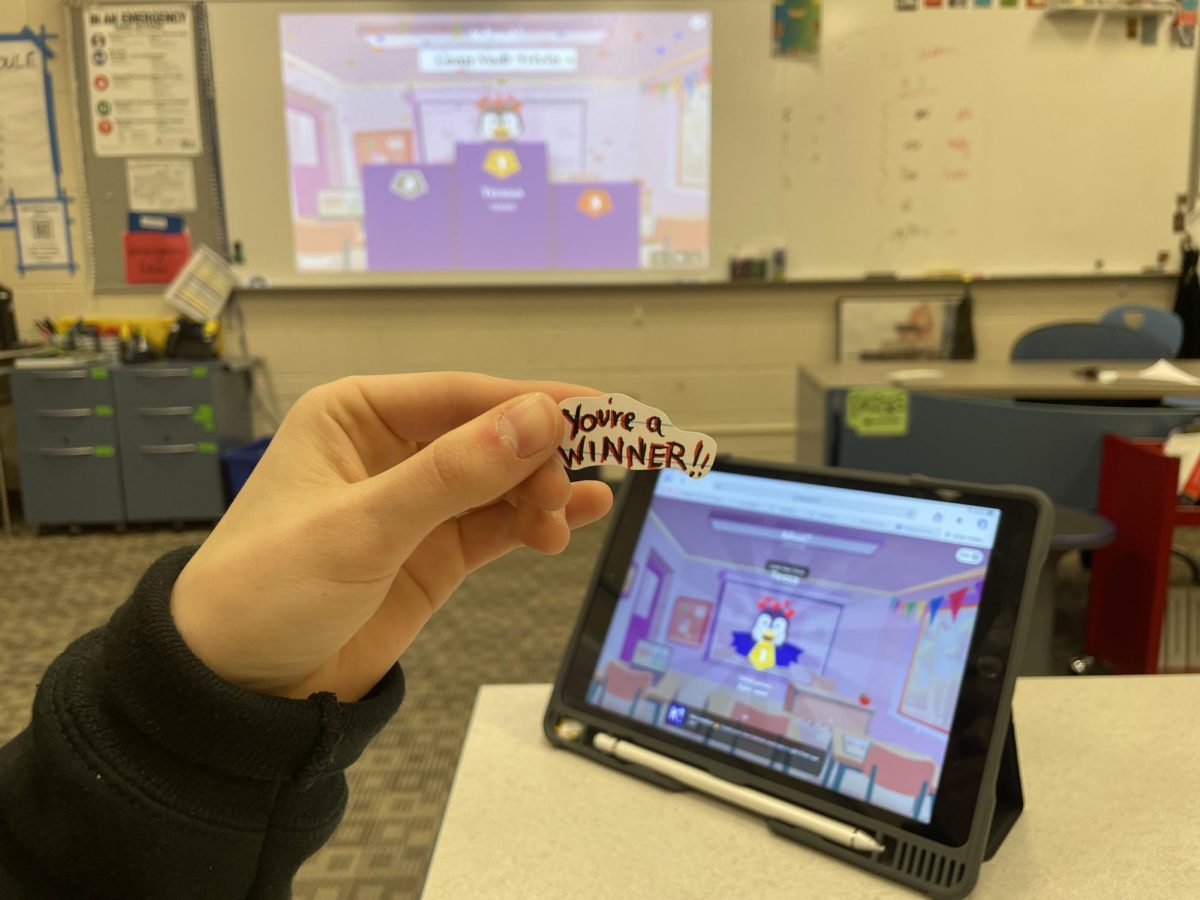Motivation for students can come in many different forms. Sometimes a student is motivated in school by their grades, their parents, or pressure they place on themselves. However, other students may value tangible rewards, a physical prize to show their effort. From stickers to stress balls to fidget toys, teachers have been providing these prizes for students in their classes.
“I just wanted to have a way for students to be recognized with things other than grades or academics,” Jonathan Clarke, science teacher, said. “[I want them to feel recognized for their] participation […] so that they can have something that can indicate they were [exhibiting] the appropriate behavior, not necessarily grade wise.”
Students, such as those in Clarke’s class, may receive stickers in class for participation for demonstrating their learning in class. According to Sienna Makhlouf, senior, she has received prizes for winning educational games.
“I think the classes that give out the prizes are a lot more fun, especially when you don’t know whether or not there’s going to be a prize, because then it makes you try your hardest every time even if you don’t get a prize,” Makhlouf said.
In my personal experience, I have noticed that receiving stickers does not necessarily motivate me to try harder to know the content in the class, but rather, it has made me more competitive and encourages me to come out of my comfort zone and talk with my peers in class.
Similarly to this, Makhlouf has also felt more motivated to play these games from a competitive aspect, rather than just using the games to learn the content of the class.
“[I feel more motivated in the classes that give me stickers and prizes] because in the [classes] that give out stickers, I like to stick them on my iPad case,” Makhlouf said. “It makes me want to have more than my friends or just have them as decoration because they’re fun.”
While Makhlouf feels that getting rewarded for games in class makes her more competitive, Clarke encourages his students to look at these games, such as Gimkit and Kahoot, from an analytical and strategic perspective.
“These games do not necessarily lend themselves to complex problems all the time,” Clarke said. “However, some of them have some strategies built into them, which gets students thinking about how to play the game better, not necessarily the activity. That strategy, and thinking about the larger picture, I do think it is helpful for those students just to get that experience.”
I have noticed that the more I play these games, the more I recognize the strategies to gain more points. As I have gotten older and have received prizes throughout my four years in high school, I have not only become better at finding the technique to win the games, but I have also grown to appreciate these prizes more than I did as a freshman because it reminds me of when I was younger.
Clarke has noticed this trend in many of his classes too, and believes that this is because of the nostalgia attached to these prizes.
“I have found that when you can access that nostalgia of [receiving stickers], students will tend to come out of their shells a little bit more. In my classes, I will do things like using TV shows from when they grew up and playing more juvenile games,” Clarke said. “Students seem to have fond memories of the younger times they were in school. It was less stressful, it was more engaging, and just being able to leverage those feelings about school is what I’m aiming for.”
Makhlouf has also noticed that even though she is a senior in high school, she still enjoys receiving prizes in classes.
“[I enjoy getting prizes in class] because it makes me feel like how I felt when I was younger. It makes me happy, and it is just fun. And no one is too old for stickers,” Makhlouf said.
As a senior, I have noticed the sentimental aspect of facing graduation. I am seeing peers, whom I have known since elementary school, commit to college. It is nice to go to a class and feel like I am still a kid who is allowed to get excited about prizes.
While some teachers and students see the positive aspects of giving out prizes in class, Maklouf says she can also acknowledge why teachers may not want to hand out stickers in their class.
“I feel there are probably some teachers that would feel like you should not be rewarded just for participating because that’s just an expectation of coming to class,” Makhlouf said. “I feel like some teachers would probably just feel like it’s expected of you to participate and you shouldn’t be rewarded for it, while other teachers know that motivation is low and so then they try to boost it because they know that it is important.”
While I understand that a teachers’ goal is to prepare students for college and their future, and colleges might not necessarily hand out prizes, I think it is important to remember that high school students are still young. I personally feel like my teachers have prepared me for college level courses while also handing out stickers and prizes.
Makhlouf also believes that receiving stickers does not take away from the curriculum, but rather is a “cherry on top” in class.
Clarke finds that it was his own personal high school experience that helped him empathize with his students as well.
“It was my personal high school experience and […] I found that I was asked to do a lot of repetitive tasks. I had to repeatedly do the same sorts of problems and exercises over and over again. Homework was one of those things where I had to do 20 of these types of exercises, and I didn’t find that rewarding,” Clarke said. “So what I wanted to be able to do is give students a reason to engage in the activity, test themselves a little bit without making it repetitive because that’s just not how I enjoyed the school experience. So trying to find ways to make it more engaging and less painful is the goal of introducing these stickers.”


